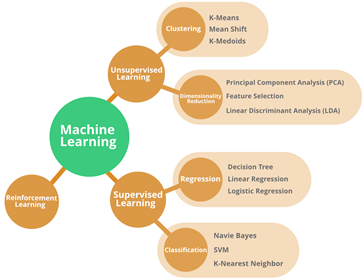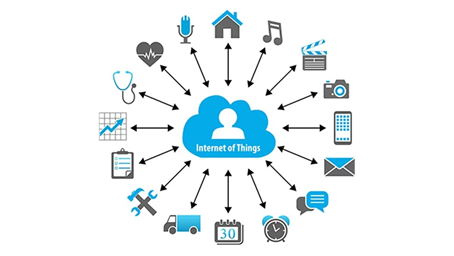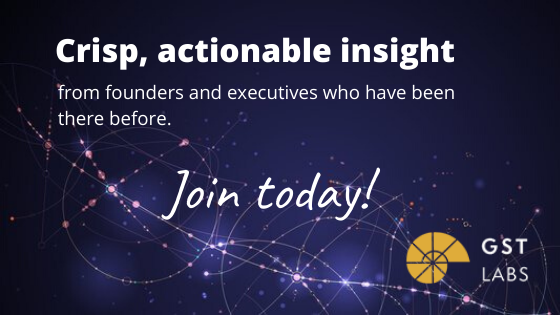Machine Learning and the Internet of Things
Machine Learning and the “Internet of Things”

If I asked you what “object” you were looking at in the picture above, you would instantly recognize it as a dog. Now, what if I asked you what breed the dog was? It’s a tougher question, but many of you would still recognize it as an adorable Golden Retriever. However, what if I then asked you how your brain figured out you were looking at a dog instead of say…a cat? This is a significantly harder question, but it all boils down to one word: Data.
Humans are constantly taking in vast amounts of data through our 5 senses and using that data to label things. Think about it. Using our senses, we can recognize almost anything. Whether it be the taste of our favorite soda or the scent of a loved one. Even if we don’t recognize something, we know to ask someone more knowledgeable or make an educated guess based on past experiences. The more data we encounter and analyze, the better we can interact with our environment.

This is the essence of machine learning. At its core, machine learning is just a tool to find patterns in a dataset or environment and make predictions from those patterns. In today’s digital world, data can be procured from anywhere and anything—from text to images to button clicks—making machine learning one of the most powerful tools humans have ever had at their disposal. There are 3 basic paradigms of machine learning: supervised, unsupervised, and reinforcement learning.
Supervised Learning is the most prevalent type of machine learning. The algorithm is given inputs and has to guess the correct outputs. The training dataset is labelled (meaning that the correct outputs are known), so the algorithm knows when it is wrong and makes the appropriate changes to improve. After mastering the training dataset, the algorithm can make accurate predictions when new, unlabeled data is obtained. This is like teaching a kid to differentiate between cats and dogs by taking them to the local PetSmart and correcting them whenever they guess incorrectly.
However, labelling datasets can be tedious, expensive, or downright impossible for certain applications. This is where Unsupervised Machine Learning algorithms are used. The algorithm is given an unlabeled dataset and must find the underlying patterns and relationships among the data points on its own. You are now sending the kid into PetSmart by themselves to separate the animals into different categories. They won’t know what the dogs or cats are called in real life, but they will hopefully understand that the two are fundamentally different from each other.
Finally, we have Reinforcement Machine Learning algorithms. Unlike the other two, these algorithms do NOT use datasets. Instead, the algorithm interacts with a certain environment and is rewarded or punished depending on its actions. After each iteration, the algorithm makes small improvements with the ultimate goal of maximizing reward and minimizing risk. Self-driving cars are a good example; the algorithm is first tested in a virtual environment with virtual roads, pedestrians, cars, etc. and tries to last as long as possible without crashing. After enough testing, the algorithm is ready to drive on the hectic streets of the real world.
In the past decade, the so-called “Internet of Things” (IoT) has exploded in popularity. Billions of new devices—from cars to coffee makers—are now being connected to the internet and constantly taking data. How do we utilize this newfound source of data to its fullest potential? You guessed it: machine learning!

Wireless security cameras are perhaps the most important of the many IoT devices, as they protect our businesses, homes, and loved ones. However, expecting humans to constantly monitor multiple camera feeds without getting distracted is impossible and irresponsible; even just one intrusion can be catastrophic for businesses and families alike. This is why supervised machine learning algorithms are being developed to analyze live video footage. After mastering the training dataset, the algorithm can accurately detect humans, vehicles, and any other objects in the footage and then automatically trigger alerts or secure the facility—all in real time.
Another fascinating application for machine learning in the IoT is equipment monitoring. More and more industrial machines are being equipped with sensors that track the machine’s performance and send that data to online servers. Who would’ve thought those giant caterpillar vehicles would be connected to the internet? Supervised machine learning algorithms can then analyze past data and predict what a “healthy” performance should look like in the current setting. If the algorithm detects any abnormal changes, it immediately notifies technicians, greatly reducing the probability of break downs and saving millions of dollars in repairs.
The application with potentially the greatest impact on our planet is energy efficiency. As more and more things are “digitized,” we require more and more electricity, so we either need to increase production or improve efficiency—machine learning helps with the latter. An excellent example is how Google uses machine learning to efficiently cool its data centers. First, unsupervised machine learning uncovers the relationships among the 120 variables that affect cooling. Then, reinforcement machine learning tweaks those variables to maximize the reward, which is efficiency in this case. The result is an automated data center that manages cooling better than humans and has already shaved 30% off its annual energy usage. These same principles can be applied to facilities around the world to save our deteriorating environment.
Here at GST, we strive to develop quality software that fulfills your needs with high performance and low maintenance. Artificial intelligence and machine learning are currently revolutionizing every single industry that involves big data, and we will be there every step of the way if that’s what it takes to keep your software innovative and ahead of the competition.
Max Yuan, Software Developer at GST
May 23, 2020


